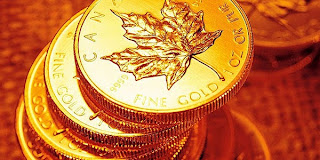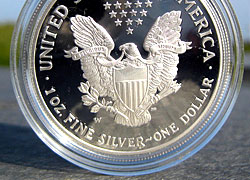If you have a nice gold piece, consider selling it privately rather than through a gold purchasing agency or jewelry store. Many companies that are in business to buy gold will only buy it to melt and sell, meaning they will pay only for the weight of the gold. An individual who likes your piece might be willing to pay a higher price tag, because they are likely to keep and enjoy the piece.
Think about selling your gold online. Gold transactions do not require traditional physical storefronts. Take advantage of websites that allow you to sell gold. The site will send you a special kit in which you'll return the gold items. If when they receive it, all is as they expected, you'll get their current rate.
When mailing your gold away for sale, make sure to read all the fine print before sending it in. Some buyers have less than stellar reputations, and you will not see this until you read the fine print. Make sure you are comfortable with all the terms you are agreeing to, or look to another location to sell your gold.
Understand how weighing gold works prior to going into a shop to sell or buy gold. There are lots of unfamiliar terms like troy ounces and penny weights. This can often fool the inexperienced into thinking they are getting a better deal than they really are. Don't let that be you.
The price of gold tends to fluctuate over time. It is smart to buy when gold prices are very low and then hold on to it. Don't panic and sell if the price goes up and comes back down. Investing in gold over a long period of time can really end up paying off.
Just like you would do a price comparison on a vehicle you are interested in purchasing, make sure you go to more than one place to inquire about the value of your gold. Different shops and dealers are going to quote you different prices. Get the most money possible for your jewelry.
Be a student of the gold market. This market is very tricky, as the price of gold is something that changes on a daily basis. What's a great deal one day could be less than stellar the next. It's up to you to know what you are getting into so that you can get the most for your buying or selling.
Watch out for "pop-up" buyers. These individuals travel from place to place, putting out advertisements that lure in sellers with the promise of a big payout. In many cases, these buyers then leave town without paying the sellers what they are owed. Always do your research on anyone you are planning to sell to.
Go into selling your gold with a realistic attitude. Some people think a few pieces are going to net them thousands of dollars, but realistically there are many factors in play. The items may not be pure gold, or they could even be plated. Consider an appraisal to understand what you really have.
Don't just bring your gold to a buyer without knowing its true value, no matter how badly you are in need of cash. Calculate the value of your items based on purity and weight so that you have a good idea what the fair market value is. Only then should you bring your gold to a dealer.
Know going into any gold buyer that you won't get the current daily rate for the price of your gold. There are all sorts of fees that come into play that will affect your final return. The goal is to find a company that gives you the best deal out there. Do a little shopping before settling.
When you are strapped for cash, sell your gold. Anything containing gold can be sold. This includes bracelets, necklaces and other jewelry. Gold plated china, gold plated cups and even dental gold can be sold for extra cash. Additionally, broken jewelry, gold coins and gold bullions can also be sold to a gold dealer.
Knowing how to test the grade of the gold will make you a smart investor. Purity is rated in karats. The purer the gold, the higher the karats and the more valuable it is by the ounce. It is unwise to rely on a karat stamp alone. You will not inadvertently purchase bad quality if you know how to do gold purity tests.
Figure out if you want to invest directly or indirectly in gold. Direct investment means you buy gold, the actual gold. You can feel and touch it. Buying gold coins is an example. Indirect investment means you buy funds or certificates that are pegged to the price of gold. Examples include gold mining stocks or exchange traded gold funds.
When shopping around for the best deal on your gold jewelry, get any offers in writing. Most companies will give you something in writing, and that offer will usually be valid for a very short period of time. You can use the written offer to negotiate a better deal at your next stop.
As you should know now, gold is a constant in our financial market. If you want to make money with gold, you must have a clear understanding of its value in the market. You must also establish clear financial goals to govern your dealings. Use the stuff you've learned here so you can take on the market gold is in and win. You can find even more detailed information about gold investment from Hubpages.











